Watan
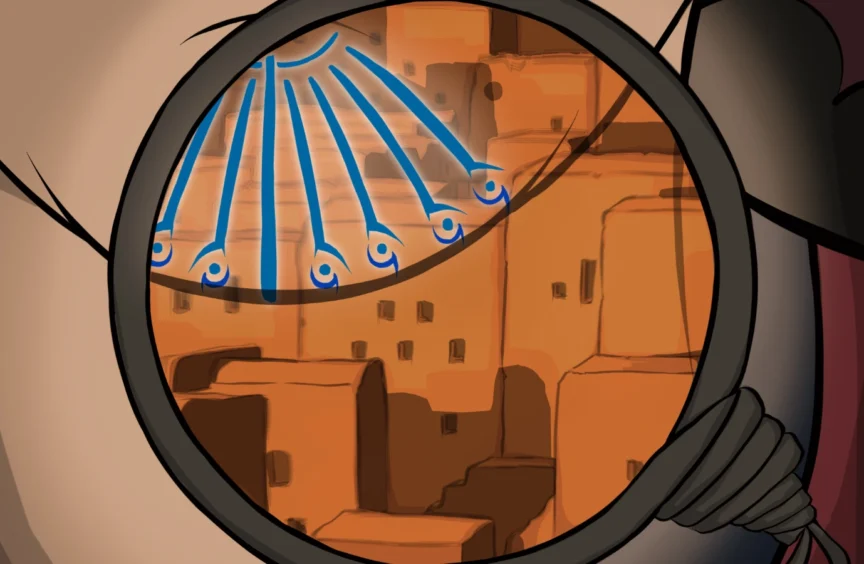
Watan follows a young widow who seeks to avenge the death of her husband and bring down the occupying regime, and to do this she must infiltrate the palace. Once inside, she is distracted by the possibilities of her influence over the emperor but soon realises that freedom does not come from an individual but from collective effort.
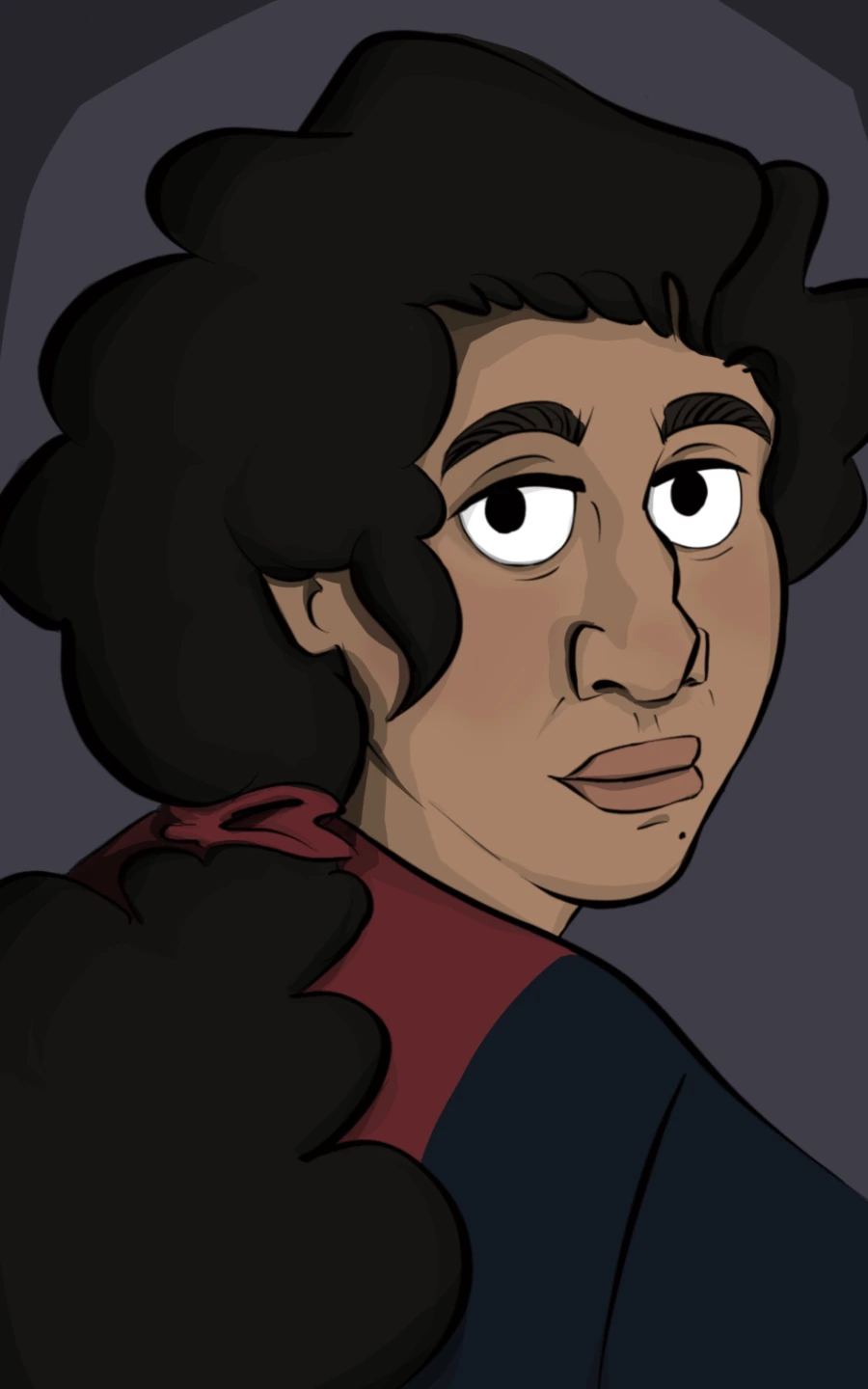
Watan is a graphic novel that challenges the normalization of colonialism readily accepted by Western society, and questions the creation myths that justify them. My hope is to use my work to generate sympathy for oppressed communities who live under occupation, but I know this is not a welcome opinion with the current administration, which is why I have chosen the pseudonym Sama Sayed.
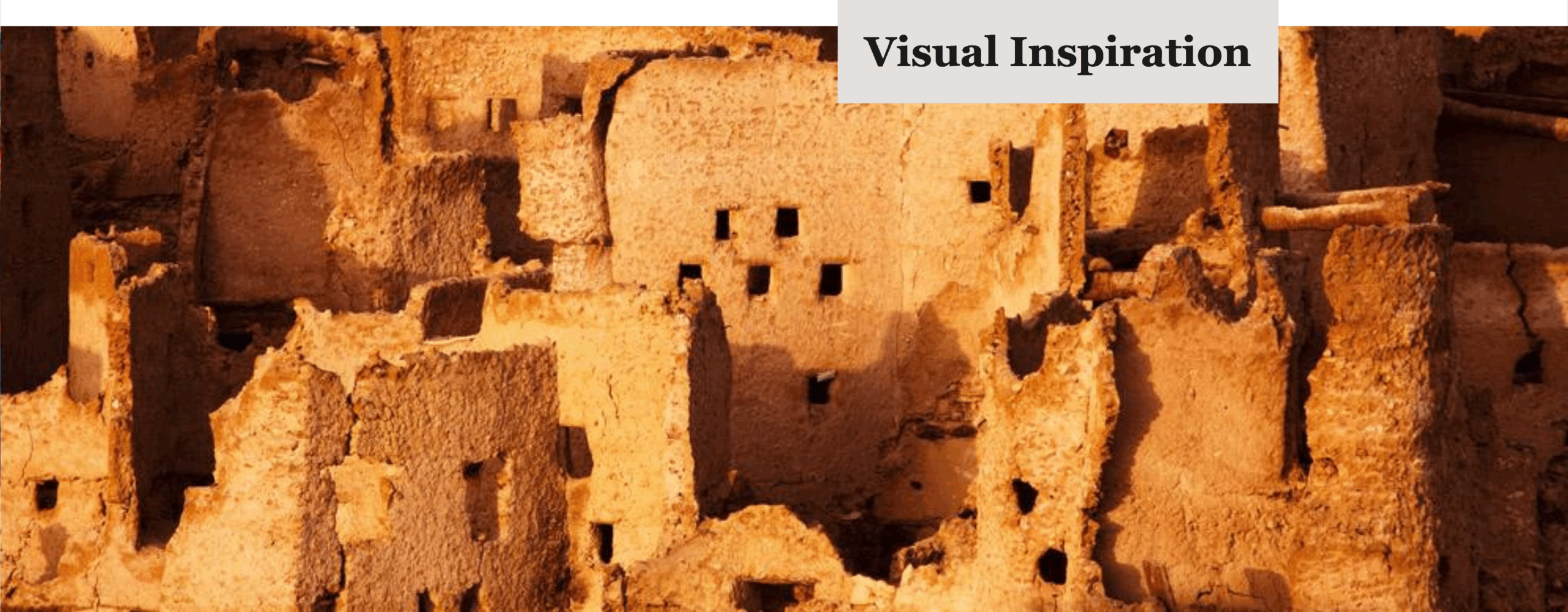
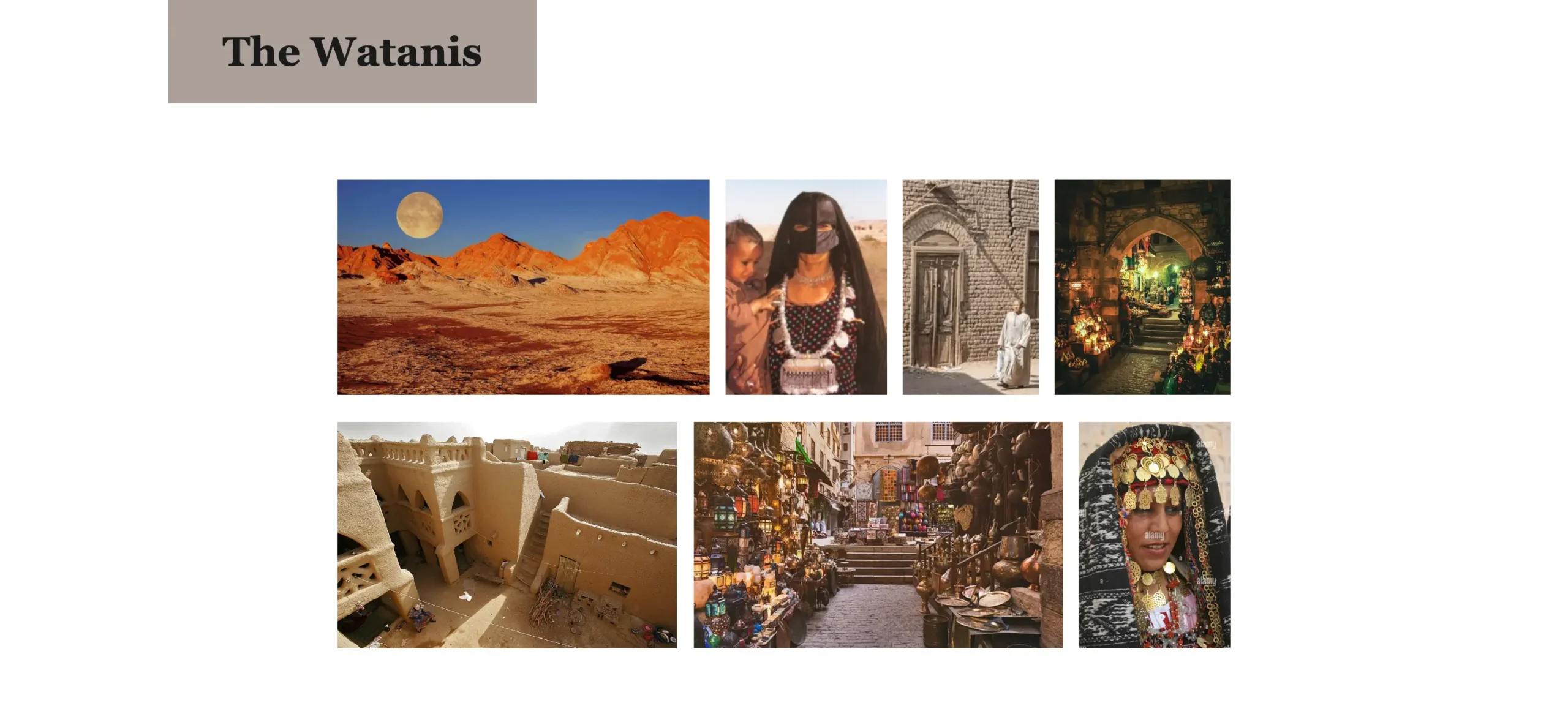
Watan is a fictional world set in a Middle Eastern and North African (MENA) inspired land. The cityscape is inspired by historical Arab and Islamic architecture, and the traditional clothing inspired by historical MENA tribal dress, but with some alterations specific to Watani culture. The most notable apparel that appear in the first few pages of Watan are the thobe/galabeyya tunic with embroidery, sirwal pants, and flat shoes or slippers. Some characters wear an ‘abaya overcoat and/or cover their hair with fabric in some form or another.

Clothing for me is an extension of storytelling. One of my former teachers described costume design as creating a culture, and I agree with that wholeheartedly. When I design characters, I think a lot about their background, history, life circumstances, and a plethora of other things that might affect the function of their garments – or even the opposite, how clothing can be used to make a person appear out of place. I also consider how a garment might be constructed. I know character design can be whatever the artist decides, but I think taking these things into consideration gives characters depth, and you don’t even necessarily have to center the choices. For instance, I’ve chosen a lot of natural-dye earthy colors for the Watani people to symbolize their connection to the land. Black dye was historically achieved by creating a dark midnight blue, which is considered the oldest known man-made pigment in history. The name Bani Azurd is a nod to the colour azure blue, derived from the Arabic word lāzuward [لَازُوَرْد] or “lapis lazuli.” Bani means “descendent of”, so descendants of blue felt like an apt name for the return of those once exiled in the distant past. Their clothing will project an attempt to try to connect to their roots but feel less grounded and earthy.
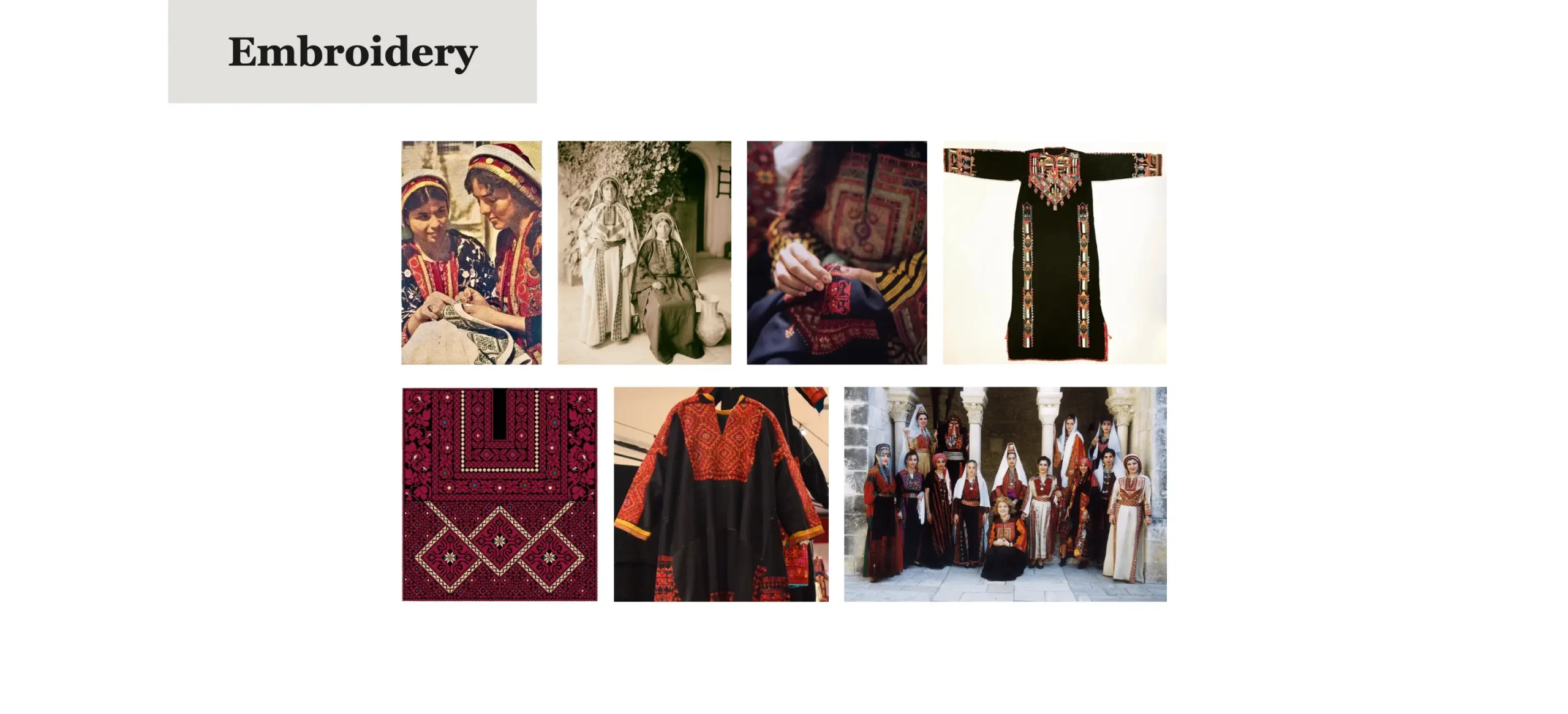
The embroidery is inspired by traditional Palestinian and Siwa Oasis cross-stitching known as tatreez. From a distance, the designs can often look like blocks, but are made up of a series of motifs which carry a lot of symbolism. Historically, these motifs have been used to tell stories, so I decided I would incorporate my own into my characters’ costumes.
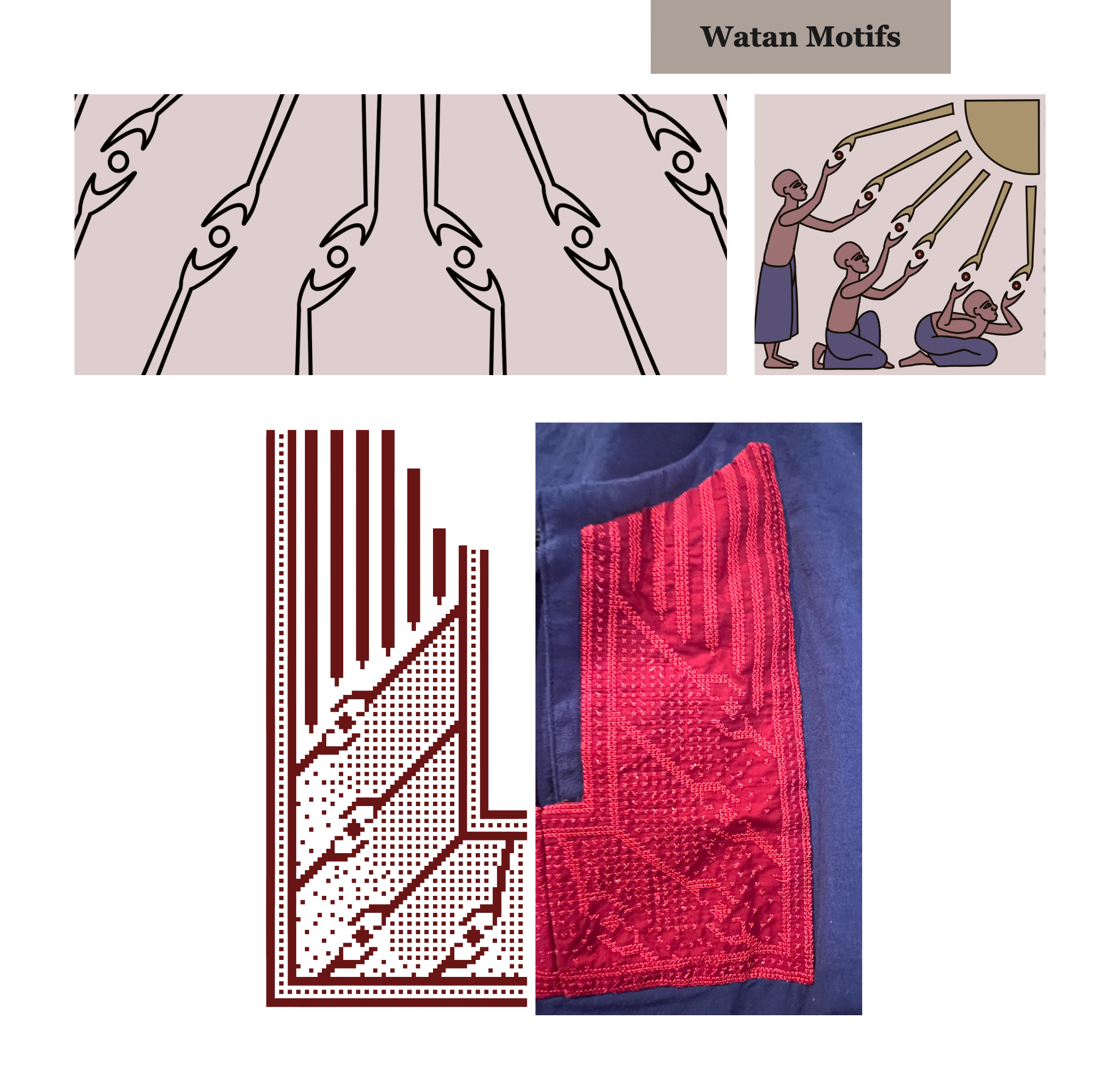
The motif above represents the blessings sent down to the Watanis by the heavenly spirits. The design will be incorporated into the chest panel on our heroine’s costume, and below are samples of how this translates into tatreez. The choice to use red thread on red fabric is an attempt to mimic the larger blocks of the design, and reveal a deeper story on closer inspection
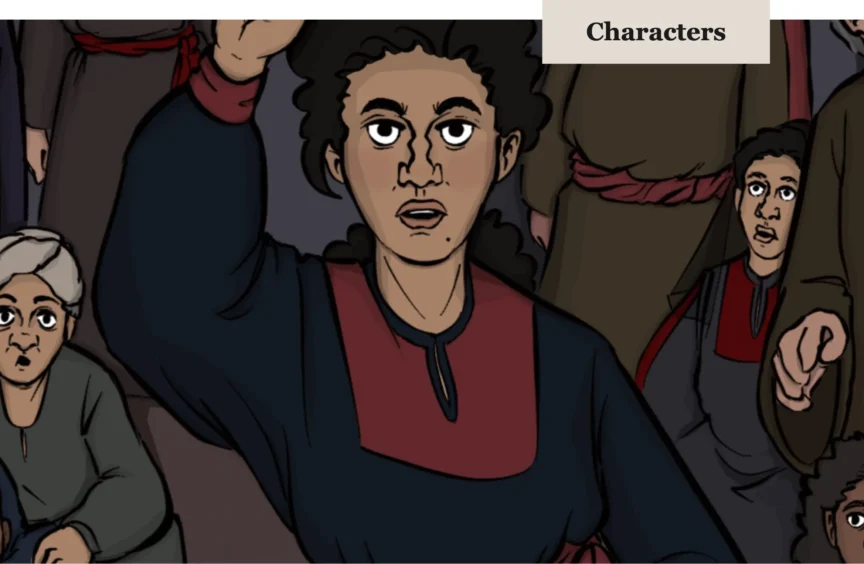

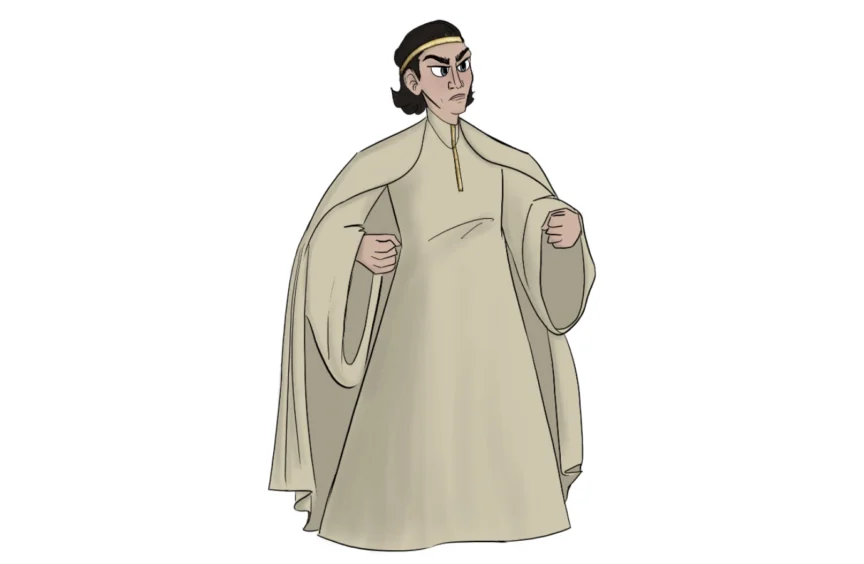
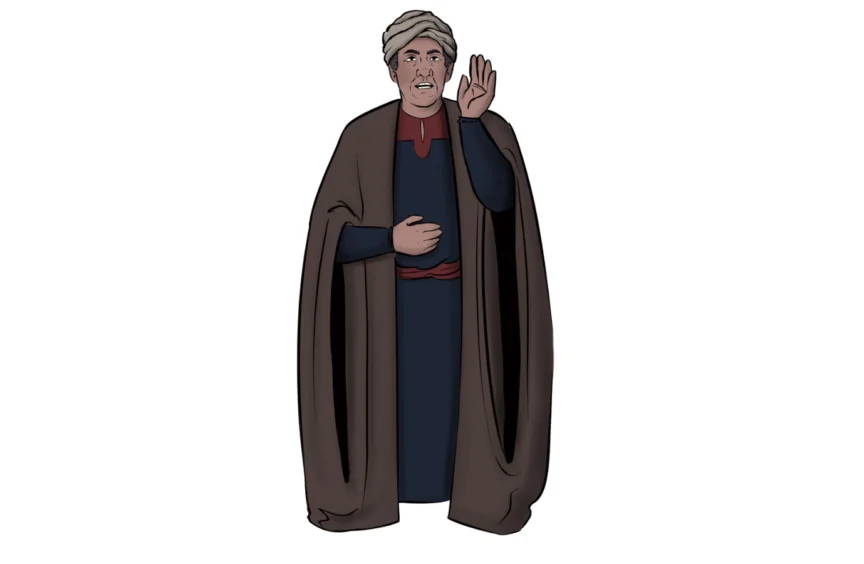
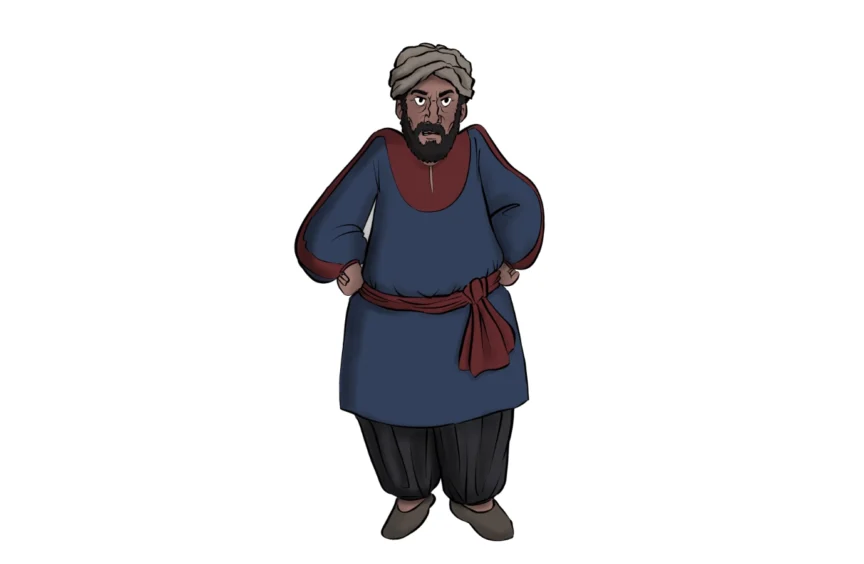
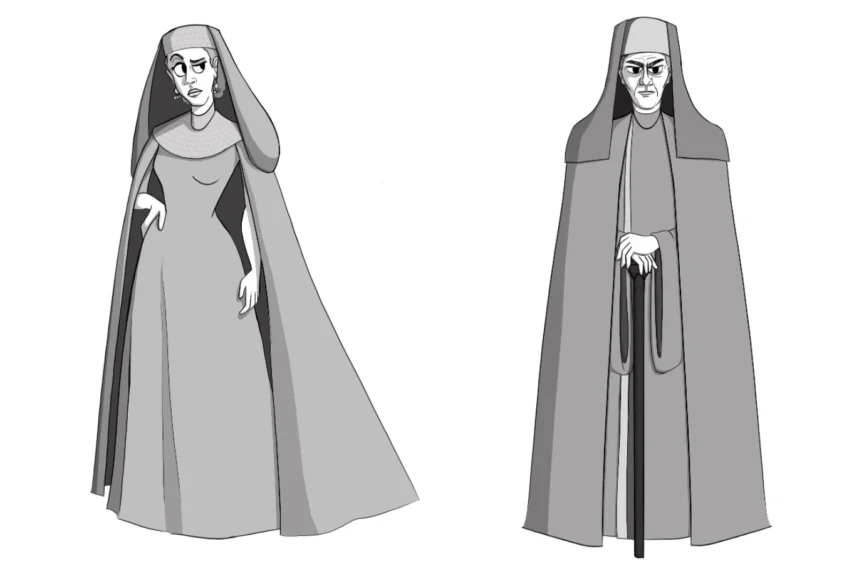
Due to the current political climate and my personal circumstances in the US, I have chosen to keep my contact information private. If you are interested in learning more about the project, please contact SVA’s Visual Narrative department to connect with me.




